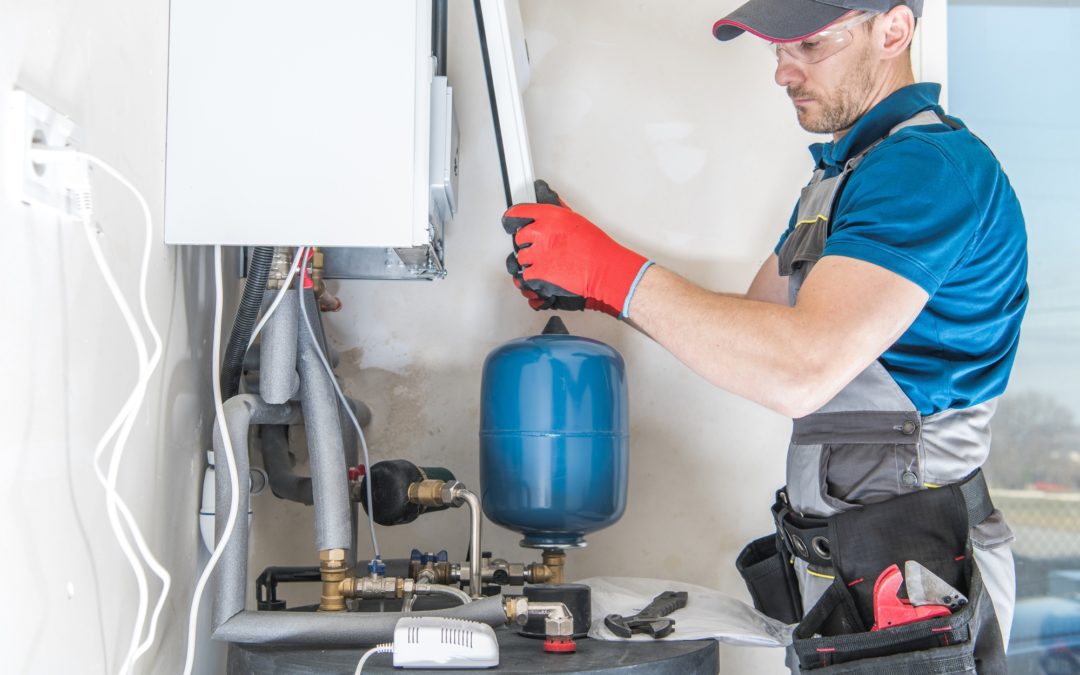You can heat the interior of your home through several methods to keep the occupants comfortable and warm in frigid conditions.
Gas furnaces use a forced-air system where you set the desired temperature on the thermostat. When the air temperature falls below that number, the pilot light, which is a small light that remains burning, will ignite the primary burner of the heat exchanger. The exchanger draws heat from the main burner and warms the air that it distributes inside.
Don’t confuse a gas furnace with an electric heat pump, which can produce both a heating and cooling effect. You will need the ideal size furnace for your property, as a smaller size won’t warm up the space efficiently, while a larger unit will rotate power off and on, leading to a greater need for regular maintenance.
If you’re undecided about installing a gas or electric furnace in your home, weighing the pros and cons will help.
Pros of Using a Gas Furnace
1) Gas Furnaces are Cost Effective
Since the energy crisis of 2001, the price of electricity has increased drastically, and it continues to increase every year. When you compare the price of gas to other heating fuels, gas is a cost-effective solution. If you’re switching from electricity to gas, you can expect to save between 50 and 70 percent on your utility bill.
2) More Efficient Than Other Options
You obtain more efficiency with a gas furnace than with other options. Studies demonstrate that new models can be up to 98 percent more efficient than old models, directly decreasing your energy bills. Using energy wisely is key for both sustainability and cost savings, which is why a gas furnace may be an ideal option.
3) Gas Furnaces are Reliable
Another advantage of installing a gas furnace on your property is receiving steady comfort and reliability. The heat that this type of furnace delivers is usually just over 110 degrees, which is far higher than your body temperature. As a result, the interior of your home heats up to a comfortable point faster. If you live in an area with frequent power outages, you can depend on the gas furnace to continue delivering service even without power.
4) Gas is a Cleaner More Eco-Friendly Fuel
With the constant threat that we’ve put on our environment over the past few decades, it’s no wonder that people are striving to make more eco-friendly decisions—including selecting a gas furnace over electricity use, as it is a cleaner-burning fuel. When you compare it to oil, wood, and electricity produced from fossil fuels, gas is the least harmful to the environment. Using gas for your heating needs reduces your region’s reliance on electricity.
5) Buyers Want Gas Heating
While you may be comfortable in your home, for now, there may come a time when you’re ready to place the house on the market. Any real estate agent will tell you that every piece of work you conduct to improve your home will increase its overall value. Potential buyers will likely ask about the availability of a gas furnace on the property. Since every homeowner is after comfort, convenience, and lower energy bills, you can be confident that gas power will help you with your home evaluation and interest from prospective buyers.
Cons of Using a Gas Furnace
While we’ve uncovered five significant benefits of installing a gas furnace on your property, it’s only fair that we share some of the drawbacks with you.
1) Gas Furnaces are Difficult to Install
Installing a gas furnace is highly complex and shouldn’t be attempted as a DIY project. Natural gas has a combustive element that makes the installation process more difficult. To avoid carbon monoxide leakage, a technician must seal the heat exchanger and other elements perfectly with no room for error. Gas furnaces require a vent to the exterior of the property, and if you don’t have one, you’ll have to cut a vent in your wall—a process that may lead to additional expenses.
2) More Expensive Than Other Options
The cost of a gas furnace is typically greater than an electric furnace. Electric ranges from $1,000 to $2,500, while gas furnaces can cost you between $3,000 and $4,000 before installation.
3) Greater Maintenance Requirements and Costs
Gas furnaces require more attention in maintenance from an HVAC technician to ensure that their operations remain safe and efficient. This inspection must occur at least once per year to check for a build-up of condensation. Since this system produces carbon monoxide, keeping to a service schedule is essential to avoid major issues.
4) Gas Furnaces Don’t Last as Long as Other Options
While every homeowner wants to install a system that can last a lifetime, it’s not a realistic goal. Gas furnaces usually perform effectively for about half as long as electric furnaces—however, you can still expect 10 to 20 years of service.
5) Noisier Than an Electric Furnace
If you’re not a fan of appliances making noises in your home, then a gas furnace might not be for you. It’s typically far noisier than an electric furnace because of the simplicity of its design. These units make the most noise when starting up or when the burner ignites.
There are solid arguments for and against gas furnaces, so the final decision comes down to your preference. You can engage an HVAC company to perform a thorough inspection of your existing energy assets to help guide you in the right direction.

